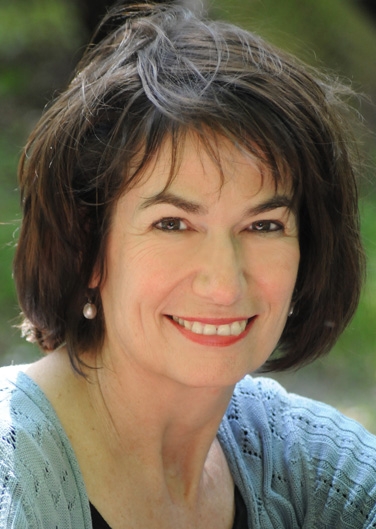Today, SevenPonds speaks with Leslie Davenport. With extensive experience as a modern dancer and psychotherapist, Leslie has combined her passion for the mind-body connection to create guided imagery programs. When explored as a tool for healing, she has found that guided imagery can play a crucial role in helping clients, particularly those who are grieving the loss of a loved one. Leslie is currently in practice at the California Pacific Medical Center in San Francisco and Marin.
MaryFrances: What are guided imagery programs?
Leslie: My work with guided imagery began at Marin General Hospital and that program affiliated with the hospital that I’m currently involved with, California Pacific Medical Center. It goes all the way back to 1989.
I was very interested in the mind-body connection. And I thought, well, as a person focused in psychology, what place better than in a health arena to understand more about the links between the body, mind and emotions? But there really wasn’t an internship for that. So I found a way to create one for myself and started to provide therapy, guided imagery and meditation at the hospital bedside.
Towards the end of my year internship there was a patient, a woman, who said she was happy with the hospital and her doctor — but that she had no idea of just how much her illness would shake her to her very core. She said, “How I look at my body is different, my social circle is different — who I thought would be there wasn’t and it really challenged my core beliefs.” And she was in the position to give an endowment to start a program to really, in her terms, “humanize medicine”; to address all the aspects of how an illness affects the whole person – body, mind, emotions, spirit.
Since I had been working in the hospital already in this kind of psychological/spiritual/imagery/meditative role, they invited me to be a core part of creating this program, which started out being called The Humanities Program and later became the Institute for Health & Healing. That was the first time guided imagery became an established offering in the hospital. Now the program has grown in huge ways.
MaryFrances: Why were you so drawn to imagery? Why not music, or crafts?
Leslie: I had a former career as a modern dancer and when I was choreographing, the qualities or energy of certain movements were accompanied spontaneously by internal visual images. Images seemed to be the natural language between my thought/feelings and the movements that wanted to express themselves in my body. Although I discovered these mind-body links naturally, the science behind these connections proved to be quite true, and is now even well documented by research. So dance was really a very internal exploration of the mind-body connection for me.
“Images seemed to be the natural language between my thought/feelings and the movements that wanted to express themselves in my body.”
When I transitioned from dance to psychology, even though it seemed like a big change, the internal part of the work was only a slight adjustment.
MaryFrances: How does the guided imagery process unfold?
Leslie: I don’t actually use a script when practicing guided imagery. I guide someone to discover their natural full breath and release tension so that they enter a very relaxed state. Then I help them bring their attention deeply inside themselves. This allows images to start to form from within the client. It’s really a network they discover; people begin to understand the links between what they think, what they feel, what they sense in their bodies, what they see and how one influences the other.
Once they are relaxed, I might ask them to allow an image to form of a healing place. As their eyes close they start to let themselves find certain images – it may start with someone sensing trees or a kind of light – and as the imagery becomes more vivid, this actually changes the physiology of their body. It works very much in the same way when we’re worrying and picturing, say, an argument we had with someone, our physiology is very affected. We feel those changes; we feel our heart racing, our muscles tensing, and the changes touch every system in the body. Guided imagery means learning about that internal landscape and utilizing it for whatever is needed, whether that’s an emotional upset, or to help with pain or symptom relief. It can go in so many directions.
Leslie’s 3 Tips for Beginning Guided Imagery:
1) Sit or lie comfortably. Give yourself 20 minutes to rejuvenate your body, heart and soul. Allow an image to form of a peaceful place, indoors or out.
2) Notice how you’re feeling and soak in the qualities of this special place. Bask in the goodness. Enjoy this soothing place for at least 15 minutes, more if you can.
3) As you are ready to return, gently sense the room you are in, knowing you can return to your special place at another time. Let the relaxing qualities linger, taking them into your day.
MaryFrances: Have you noticed a trend in the images that those in the midst of bereavement or grieving create?
Leslie: There are definitely areas that seem to be common for people who are dealing directly with dying. The first is what I would call “Life Review,” or a way of picturing, very vividly, the events of our past. Guided imagery uses a different part of our brain than the rational, analytical part that we use most of the time. It draws on the right hemisphere of the brain as opposed to the left hemisphere. One of the hallmarks of guided imagery is that people are surprised by the images that come to mind. They’ll find that they haven’t remembered, say, a childhood room that they grew up in, for such a long time until that moment. And they’re so surprised by how vivid and natural it is for them to revisit it. In moments like that, someone can then more fully integrate the arc of their life. They can address a point of conflict and offer forgiveness or simply explore or express something that wasn’t able to happen at that point in their life.
And then, very tied to that is the notion of “Completion.” Someone may not be able to be directly in touch with a person, for example, who has passed, but we can start an imagery process through which they can enact what they would want to say, or what would need to happen. It is often a very moving experience. It’s this idea of tying up loose ends and passing along information, of honoring the significance of key life events and relationships.
“It’s this idea of tying up loose ends and passing along information, of honoring the significance of key life events and relationships.”
MaryFrances: Is guided imagery something everyone is capable of engaging in?
Leslie: I often hear people say, “Well I’ve done guided imagery before and I guess I’m just not that type of person. I can’t do it.” And what we’ve come to learn is imagery is an incredibly natural way that every single person uses. It’s just been really devalued in our culture, so it takes a little practice to re-engage it. To get people to understand how commonplace it really is, I’ll often ask, “How many windows you have in your home?” And what people inevitably do is start taking a brief but vivid mental tour of wherever they’re living. No one simply says “ten.” That little exercise takes people into a simple imagery experience, and it shows them directly how accessible it is. People don’t realize that the imagery pathway is just rudimentary and not totally developed, but can be. It’s natural for absolutely everyone.
If you’d like to listen to a more extensive version of Leslie’s above guided imagery tips, e-mail maryfrances@sevenponds.com
More SevenPonds Interviews:
- What Is a Sea Burial? An Interview with Captain Brad White
- What is Beyond Surviving? An Interview with Susan Celentano, LMFT
- What Is The Centre for Living with Dying Program? An Interview with Janet Childs

 What is Guided Imagery? An Interview with Leslie Davenport
What is Guided Imagery? An Interview with Leslie Davenport




 “Making Mobiles” by Karolina Merska
“Making Mobiles” by Karolina Merska
 “Hands Up to the Sky” by Michael Franti & Spearhead
“Hands Up to the Sky” by Michael Franti & Spearhead
 Coping With Election Grief
Coping With Election Grief














